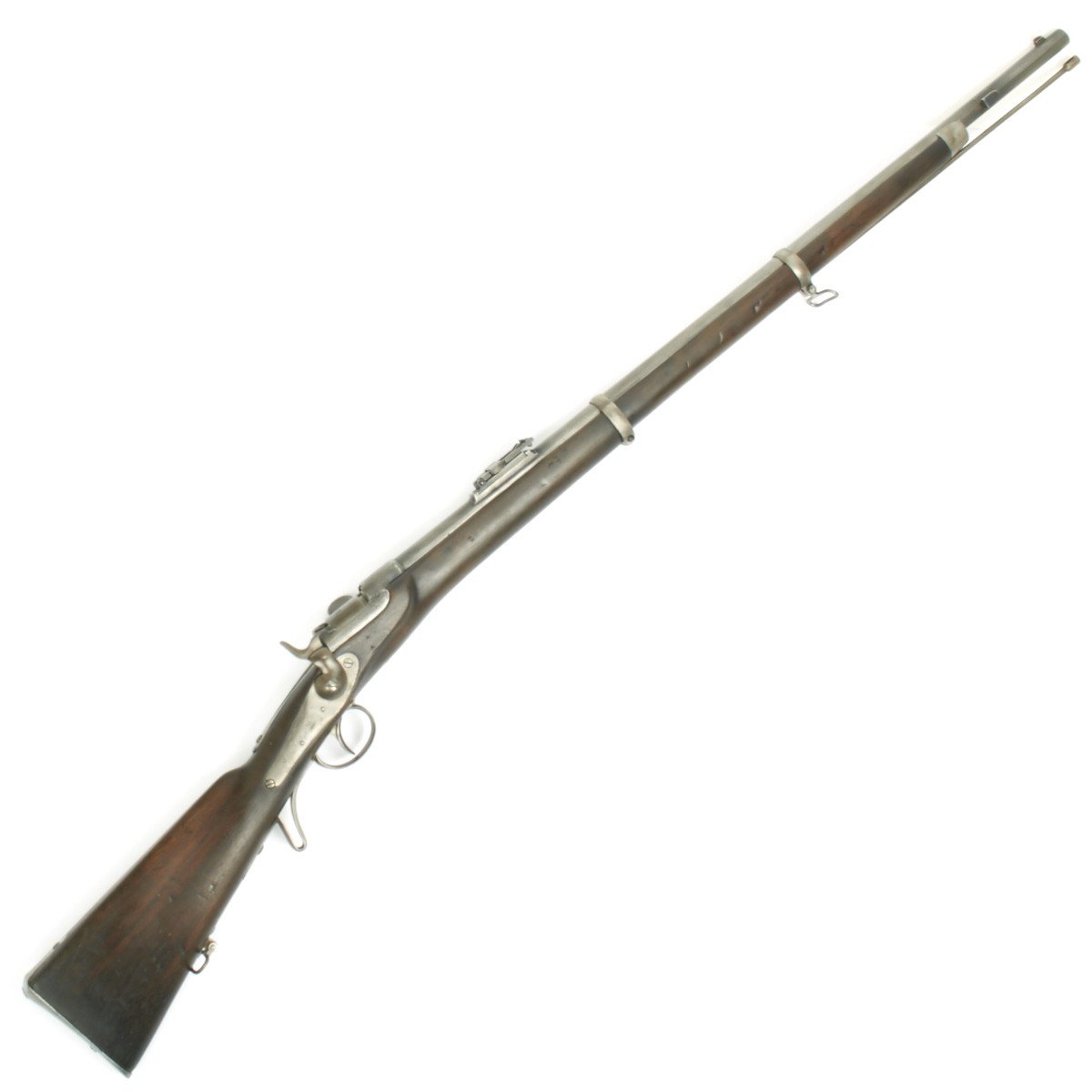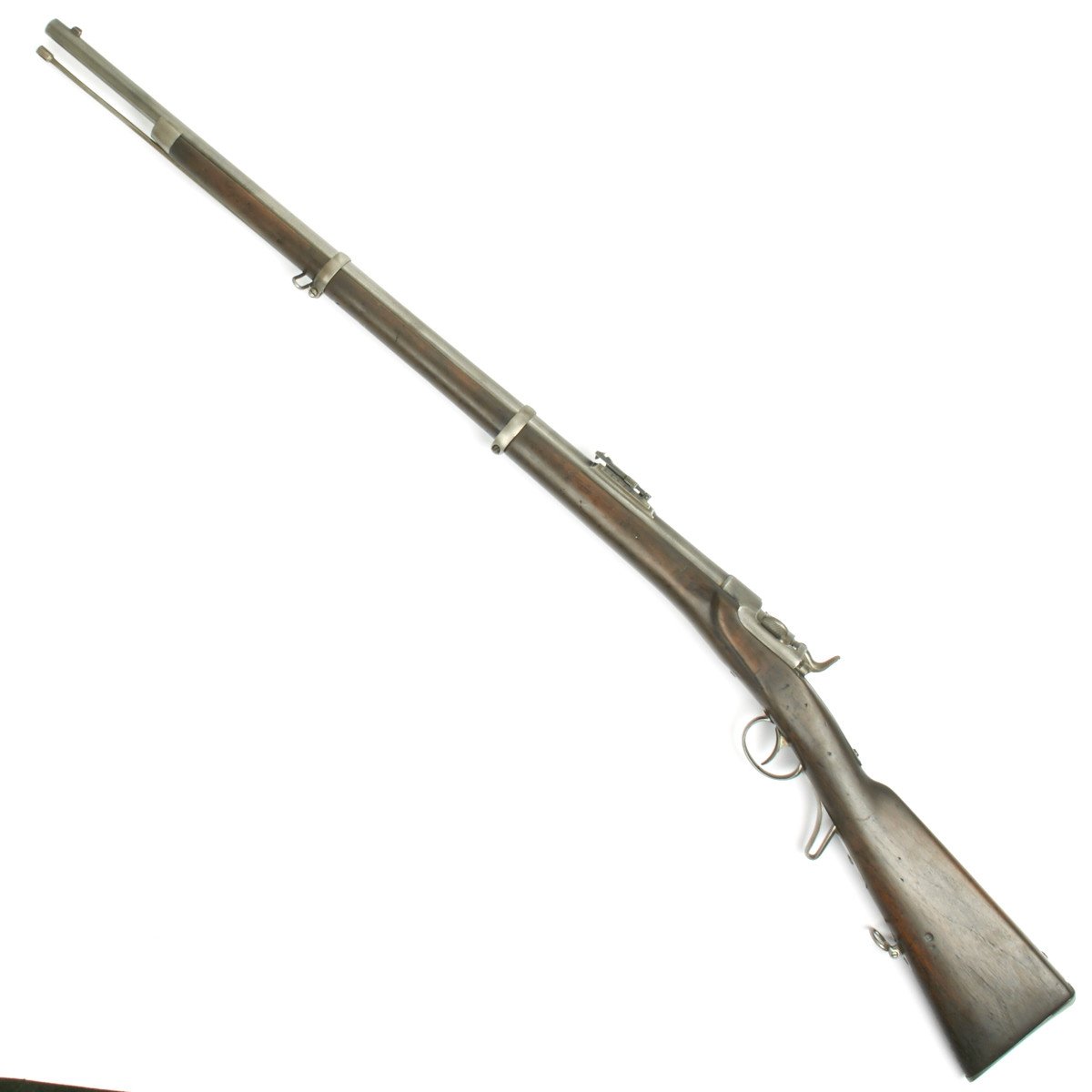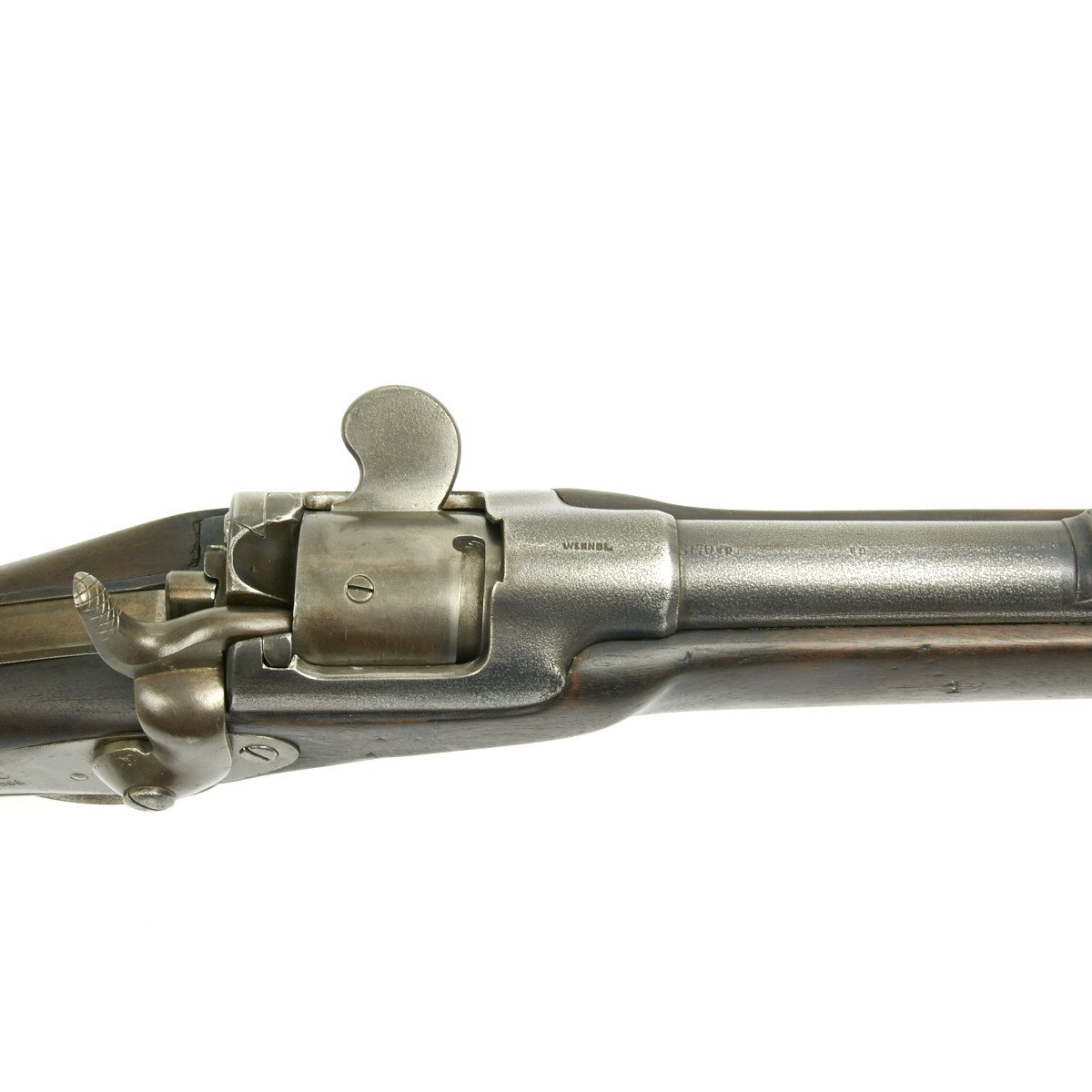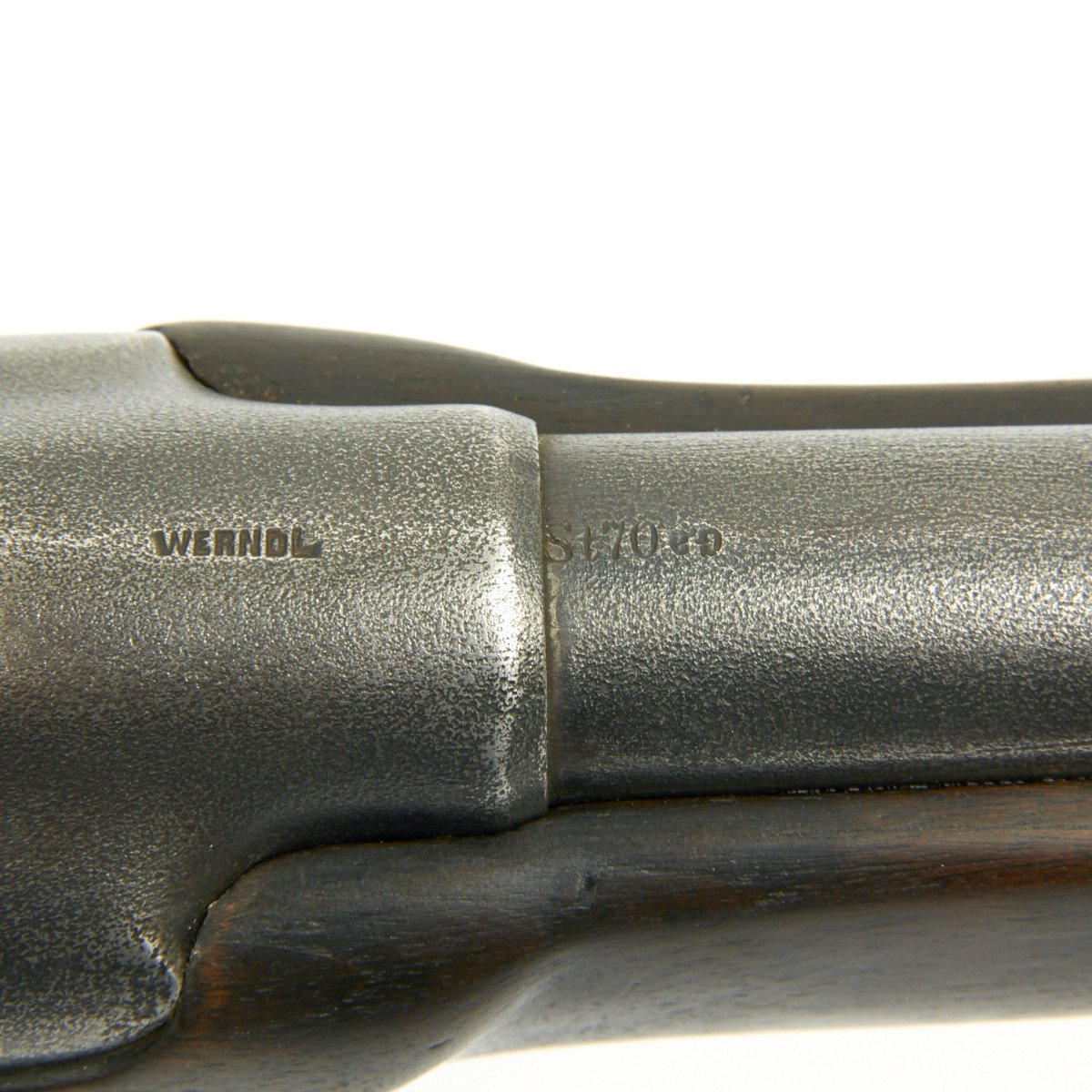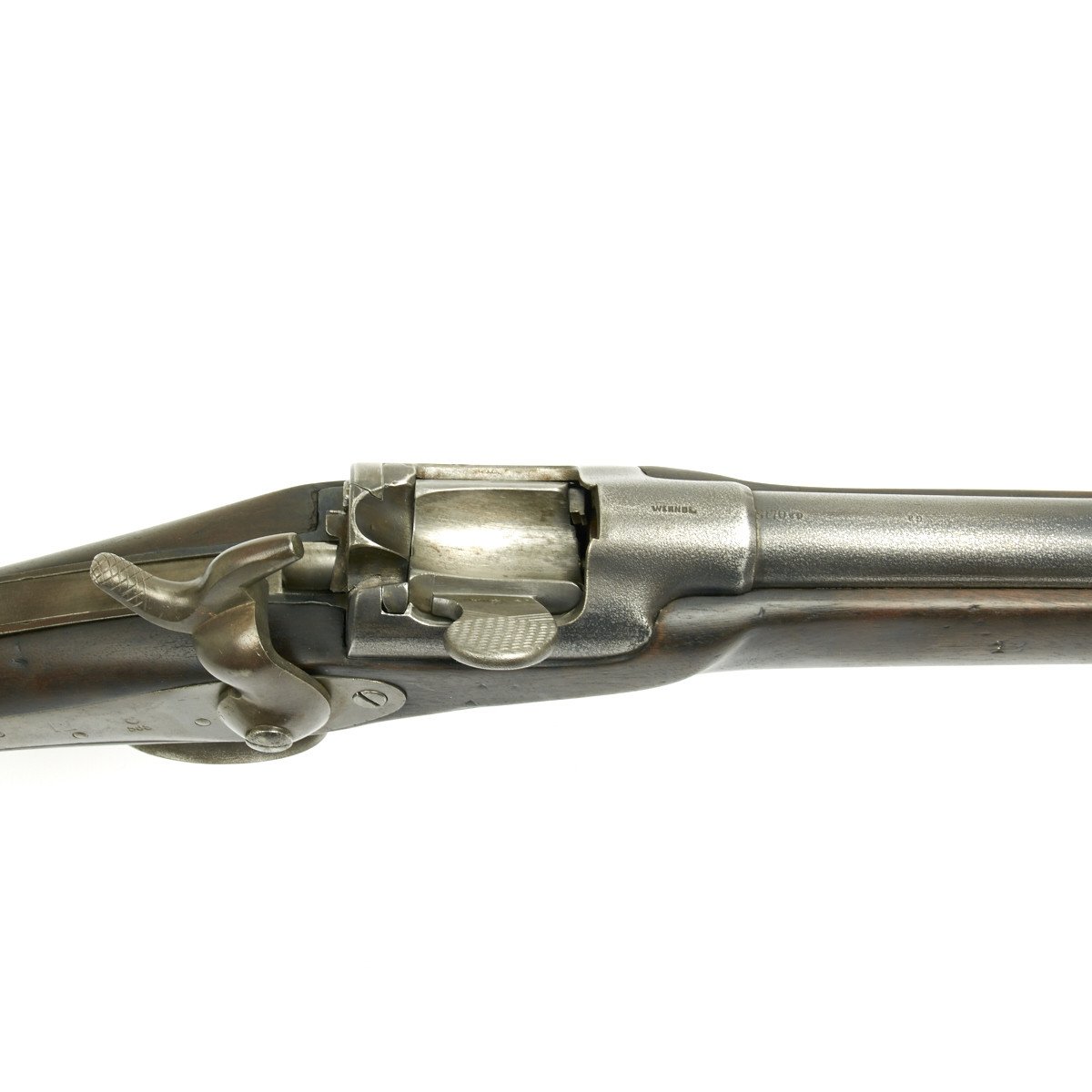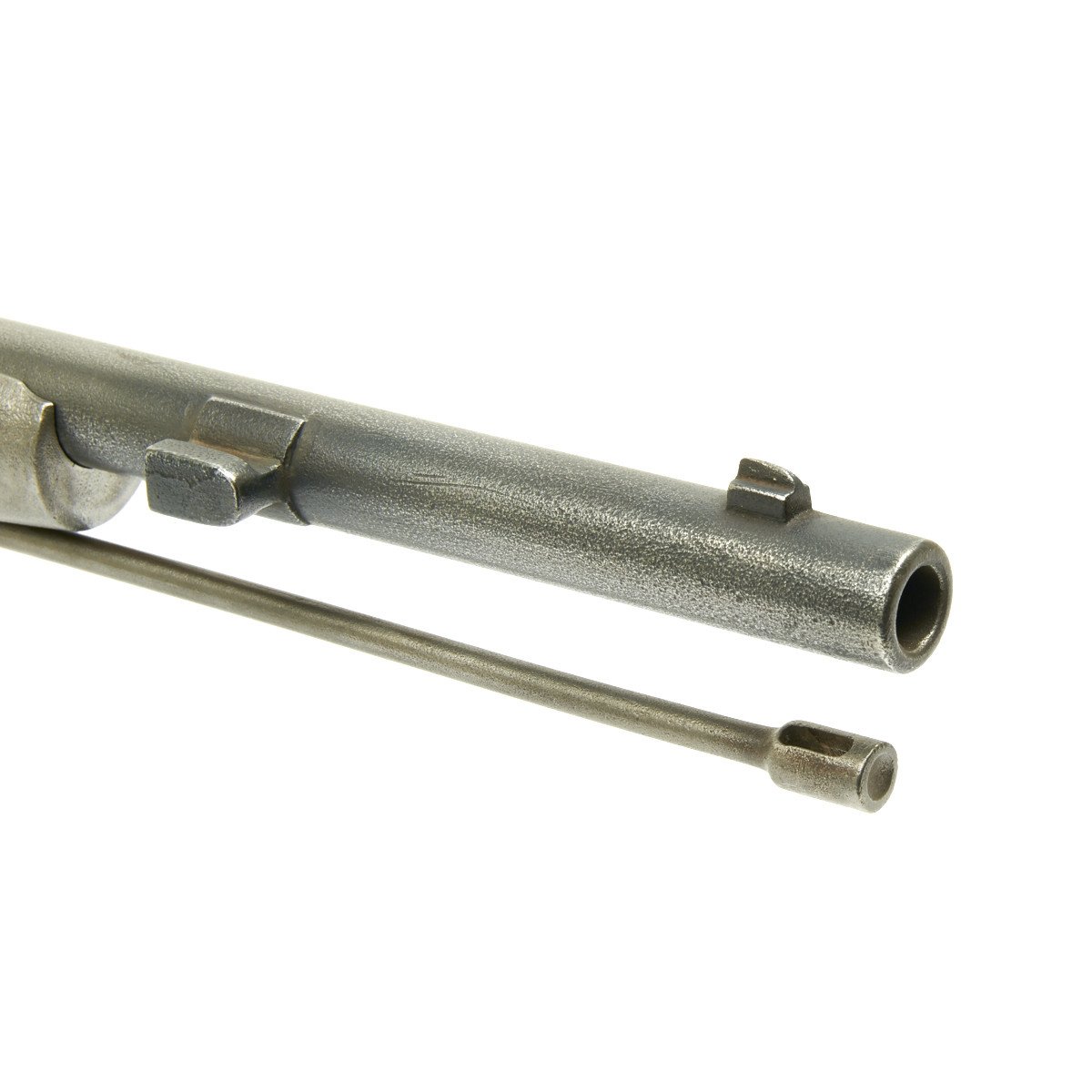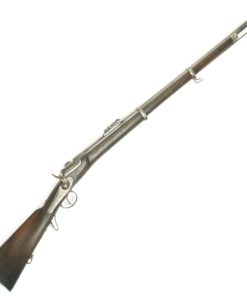Original Austrian Model 1867 WERNDL Infantry Rifle- Dated 1868 Original Items
$ 995,00 $ 248,75
Original Item: Only One Available. The M1867 WerndlHolub was a single-shot breechloading rifle that the Austro-Hungarian army adopted in 1867. It replaced the Wanzl breechloader conversion of the muzzle-loading Lorenz rifle. Josef Werndl (1831-1889) and Karel Holub (1830-1903) designed and patented their design; Werndl later bought out all the rights.
This example, fully cleaned, still has regimental markings on the steel butt plate and is nicely marked “868” for 1868.
WG (Österreichische Waffenfabriksgesellschaft) produced the Werndl and chambered it for the 11mm scharfe Patrone M.67 [1] (11.15×42R) cartridge. In 1877 the military rechambered the Werndl for the bottleneck 11mm scharfe Patrone M.77 (11.15×58mmR) cartridge.
In spite of the Werndl being long obsolete by World War I, the Austro-Hungarian forces issued Werndl rifles to rear-echelon units to free up more modern rifles for use by front-line troops.
It was adopted by the Imperial Austrian Army in 1869 to replace the WANZL breech loading conversion of the muzzle loading Lorenz Rifle. The Wendl saw extensive service even after it was declared obsolete in the 1880s as it was issued to reserve regiments during the First World War and only finally becoming fully retired in 1918.
The principal feature of the M1867 was the drum-breech, which, while sturdy and secure, compromised extraction. The rifle had a one piece stock with a straight wrist, a back-action lock and an external hammer. There were two screwed barrel bands and a nose cap; swivels lay under the middle band and butt. A cleaning rod was carried beneath the muzzle. A bayonet lug appeared on the right side of the muzzle. Standard infantry-pattern trigger guards were plain ovals, but a finger spur was substituted for Jager units.
Made by Österreichische Waffenfabriks-Gesellschaft, Steyr, 1867-74
Quantity: 600,000
Rotary-block breech, with an external hammer
Caliber: 11x42mm rimmed
1278mm [50.3″] overall, 4.43kg 9.7 lbs
855mm [33.7″] barrel, 6-groove rifling, RH, concentric
Ramp-and-leaf sight graduated from 200 to 1400 paces
Muzzle velocity 436m/sec with M1867 rifle cartridge
This is the rifle that got Steyrwerks off the ground! As a result of the obvious superiority of the Dreyse Needle guns shown at the battle of Sadowa, Austria decided to adopt a small calibre metallic cartridge breech loader. The Austrians knew that the Wanzl conversion of the M1854 Lorenz was a stopgap at best and they engaged in extensive trials to adopt a successor. The Werndl was principally the invention of Karel Holub who associated with Josef Werndl, director of Styerwerks, to manufacture the rifle. At trials at the Vienna Arsenal, the Remington Rolling Block system was the clear front-runner until submission of the Holub and, when a decision could not be made, both rifles were submitted to the King who, (surprise!) chose the Holub.
This is a rotating drum-action breech loader that can’t easily be missed for anything else. When the hammer is drawn back the longitudinal drum breechblock is rotated on a central pin by means of a flat lever protruding from and integral with the drum. The drum has a section cut out to allow loading of a fresh round and, when loaded, the drum/ block is rotated back, the cut-out being replaced by the solid face of the block. The firing pin is located offset within the block in a manner reminiscent of the Snider and Trapdoor blocks and recessed within the block allowing the block to pivot within the receiver.
NOTE: International orders of antique firearms MUST be shipped using UPS WW Services (courier). USPS Priority Mail international will not accept these.
Fast Shipping with Professional Packaging
Thanks to our longstanding association with UPS FedEx DHL, and other major international carriers, we are able to provide a range of shipping options. Our warehouse staff is expertly trained and will wrap your products according to our exact and precise specifications. Prior to shipping, your goods will be thoroughly examined and securely secured. We ship to thousands clients each day across multiple countries. This shows how we're dedicated to be the largest retailer on the internet. Warehouses and distribution centres can be located throughout Europe as well as the USA.
Note: Orders with more than one item will be assigned a processing date depending on the item.
Before shipping before shipping, we'll conduct a thorough inspection of the items you have ordered. Today, the majority of orders will be delivered within 48 hours. The delivery time will be between 3-7 days.
Returns
The stock is dynamic and we cannot completely manage it because multiple stakeholders are involved, including our factory and warehouse. So the actual stock may alter at any time. It's possible that you may not receive your order once the order has been made.
Our policy is valid for a period of 30 days. If you don't receive the product within 30 days, we are not able to issue a refund or an exchange.
You can only return an item if it is unused and in the same state as the day you received it. You must have the item in its original packaging.
Related products
Uncategorized
Uncategorized
Armoured Fighting Vehicles of the World: AFVs of World War One (Hardcover Book) New Made Items
Uncategorized
Uncategorized
Uncategorized
Uncategorized
Uncategorized
Uncategorized
Uncategorized
Uncategorized
Uncategorized
Uncategorized
Australian WWII Owen MK1 Machine Carbine SMG Custom Fabricated Replica with Sling Original Items
Uncategorized
Uncategorized
Uncategorized
Uncategorized
Armored Burgonet Helmet & Polearm from Scottish Castle Leith Hall Circa 1700 Original Items
Uncategorized
Uncategorized
Uncategorized
